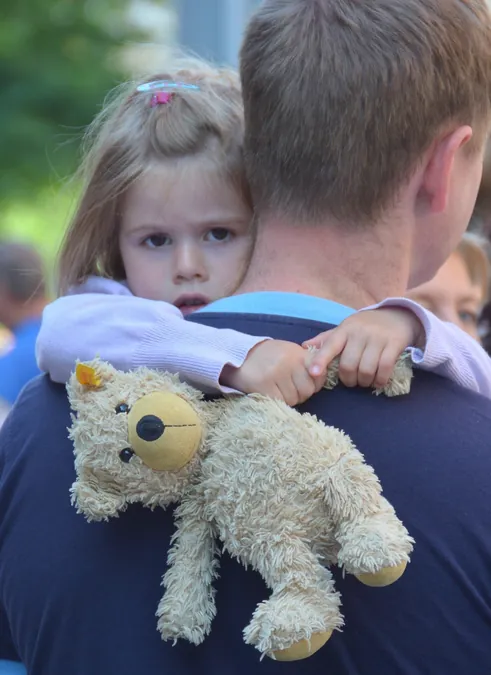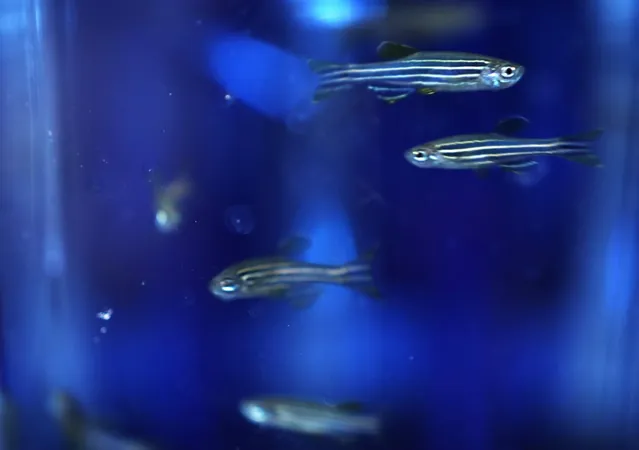
How Stressful Life Events Shape Childhood Psychopathology: New Insights from Boston Children's Hospital
2024-11-17
Author: Noah
Introduction
Recent psychology research has been shedding light on the profound impact that adverse and traumatic life events have on mental health, particularly in children. Understanding this complex relationship is critical, as it can guide the development of more effective therapeutic interventions for young patients facing psychological challenges.
Study Overview
A groundbreaking longitudinal study conducted by researchers at Boston Children's Hospital delves into how the timing of stressful life events, exposure to various types of trauma, and family resilience influence internalizing and externalizing symptoms of psychopathology in children. The findings, published in the journal Communications Psychology, reveal crucial insights that could reshape psychotherapeutic practices for childhood mental health.
Key Findings
The authors, Viviane Valdes and Dashiell D. Sacks, emphasize the need for more comprehensive studies that explore the interplay between the timing of stressors, the nature of these traumatic experiences, and family dynamics. "While the connection between stressful experiences and psychopathology is well documented, understanding how these aspects interact is essential for effective intervention," they noted.
In this study, the team examined two primary expressions of psychopathology: internalizing symptoms, which include anxiety, depression, social withdrawal, and psychosomatic pain; and externalizing symptoms, characterized by behaviors such as aggression, impulsivity, and defiance. The research involved 456 parents who reported on their children's experiences with stressful events and symptoms at various developmental stages—when the children were infants, and again at ages 2, 3, 5, and 7 years.
Impact of Stressful Events
The results were compelling. Notably, stressful events experienced during the early toddler years (ages 1-2 and 2-3) were linked to internalizing symptoms in girls, although boys did not show significant internalizing issues despite experiencing similar stressors. This suggests that the impact of early trauma may vary between genders.
"Every time point assessed at age 3 was significantly correlated with increased externalizing symptoms," the researchers stated. By age 5, both types of symptoms were increasingly associated with a higher frequency of stressful events across all children. The study highlighted important timing effects, including cumulative impact and sensitive periods where children are particularly vulnerable.
Factors Influencing Psychopathology
Furthermore, the researchers identified three key factors that influence the emergence of psychopathology following stressful events: the timing of those events, the type of trauma experienced, and the resilience exhibited within the family unit. Specifically, exposure to interpersonal trauma was more likely to relate to increased internalizing symptoms, while both interpersonal and non-interpersonal trauma were connected to greater externalizing behaviors.
Role of Family Resilience
Intriguingly, aspects of family resilience emerged as protective factors. Higher levels of family commitment and the capacity to navigate challenges were correlated with a reduced risk of internalizing symptoms, while a strong sense of control within the family context seemed to mitigate externalizing problems by age 7.
Implications for Therapeutic Practices
These findings open new avenues for therapeutic practices aimed at reducing the psychological impact of early life stressors. By identifying and bolstering family resilience and tailoring interventions based on the timing and nature of trauma, healthcare providers can better support children at risk for developing mental health disorders.
Conclusion
As mental health research progresses, the insights gained from this study encourage further investigation into how these factors combine to influence childhood psychopathology, ultimately paving the way for better preventative and therapeutic strategies in mental health care.
Stay tuned for more updates on childhood mental health research that could change the narrative for young patients everywhere!









 Brasil (PT)
Brasil (PT)
 Canada (EN)
Canada (EN)
 Chile (ES)
Chile (ES)
 España (ES)
España (ES)
 France (FR)
France (FR)
 Hong Kong (EN)
Hong Kong (EN)
 Italia (IT)
Italia (IT)
 日本 (JA)
日本 (JA)
 Magyarország (HU)
Magyarország (HU)
 Norge (NO)
Norge (NO)
 Polska (PL)
Polska (PL)
 Schweiz (DE)
Schweiz (DE)
 Singapore (EN)
Singapore (EN)
 Sverige (SV)
Sverige (SV)
 Suomi (FI)
Suomi (FI)
 Türkiye (TR)
Türkiye (TR)